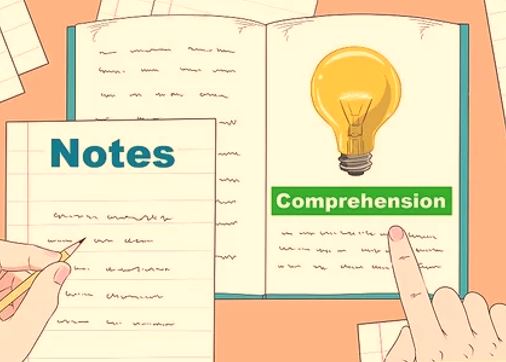Subjective Comprehension-IV
Please study carefully the comprehension given below. The passages is followed by a set of questions choose the best answer to each question.
What is the future which awaits our children? The underlying assumption of the questions that Indian children have a common future is itself dubious. It can legitimately be asked whether a student who is well fed, attending a boarding school in the salubrious climate of the hills, and learning to use computers has any future is common with malnourished child who goes to a school with no black boards. The latter may have no worthwhile future at all. And it might be worthwhile to analyze the significance of this marginalization of more than 75 percent of the children of this country.
The failure to provide an infrastructure for primary education in the villages of India more than 40 years after Independence is in sharp contrast with the sophisticated institutions, for technical institutes of higher education are funded by Government, which essentially means that the money to support them comes from taxes. And since indirect taxation forms a substantial part of the taxes collected by the Government, the financial burden is borne by all the people. L.K. Jha put it graphically when he observed that 25 paise of every rupee spent on education of an IIT student comes from the pockets of men & women, whose children may never enter a proper classroom.
Ques 1. Why can there not be equality among Indian children?
Ques 2. How does the writer bring out the disparity in educational system for children?
Ques 3. What is going to be the effect of such difference in future?
Ques 4. What is the opinion of L.K. Jha on education?
Ques 5. What does the author want to convey?
Solution :
Ans 1. There can not be equality among Indian children because there are two classes of children. They get two different kinds of education in the country.
Ans 2. Those belonging to affluent class get superior education in boarding schools of the hills and learn the use of computers. How a child going to a school without a black board can compete with the former?
Ans 3. It is not correct to say that Indian children have a common future. 75% of the children of the country are not expected to have bright future for lack of proper education.
Ans 4. According to L.K. Jha most of the money for higher education comes from indirect taxes which every citizen of the country has to pay. In fact, the funding of higher technical education by the government is the result of contribution of largely that section of society whose children can not dream of proper schools,
Ans 5. The author wishes to impress upon the facts that the education of 75% of the children of this country is neglected. Most of them go to a school with no black boards. Government has failed to provide necessary facilities for the education of the children. The author wants to emphasise that the Indian children are not expected to have a common future.
